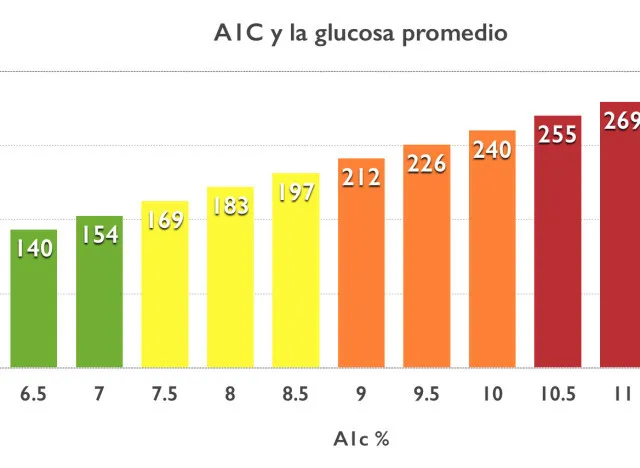You have heard mentioning the A1C test (glucosylated hemoglobin), you see it in diabetes medications or brochure medications while waiting in medical offices.But what is it, what does it mean and is necessary?
The result of the A1C test (glucosylated hemoglobin) has a direct relationship with the future health of people living with diabetes.The A1C shows us the average of glucose levels (blood sugar) during the past 3 months.
This test is very important, and helps the doctor to know if the treatment they have established is being effective in handling your diabetes or if you need to make adjustments.
A1C test values can also be used to diagnose diabetes and prediabetes.
• Normal (there are no diabetes): less than 5.7 percent
• Prediabetes: 5.7 to 6.4 percent
• Diabetes: 6.5 percent or more
The A1C test is performed with a drop of blood, just as when we use the glucometer, and a quick result can be obtained, from 10 to 15 minutes, after the test is performed.Unlike other tests, the A1C does not require special preparation and does not need to be fasting.The A1C does not replace the daily measurement of the glucose level.
Hemoglobin is a protein that has the function of transporting oxygen from the lungs to the tissues, and is found in red blood cells (blood cells).Glucose adheres to hemoglobin to form glucosylated hemoglobin or A1C hemoglobin.
Red blood cells live in our body for approximately 120 days (3 months).Our daily glucose levels are related to the result of the A1C.
The higher our glucose levels, the greater the result of the A1C.
The objective of the treatment of people with diabetes is to maintain their blood glucose levels within the parameters established by their doctor during as long as possible.
Avoiding high glucose levels for prolonged periods, we help minimize health complications and progressive damage to body organs, such as kidneys, eyes, cardiovascular system, and nerves.
The higher the result of the A1C, the worst is the management of diabetes and increases the risk of future complications.
What does the result mean?
The result of the A1C is expressed as a percentage, and it is recommended that people with diabetes have the goal of maintaining the level below 7 percent.7 percent have an average daily glucose of 154 mg/dl.
In the case of children, the American Diabetes Association recommends maintaining an A1C less than 7.5%.
How often should I perform the A1C test?
If the A1C result is within the parameter established by your doctor, twice a year is sufficient.
Otherwise, your doctor can ask you to test every 3 months, making changes in your treatment until you get to the established parameter.Children with diabetes must perform the A1C test every three months.
Benefits of A1C reduction
The reduction of the A1C for only a 1% point will benefit in:
- Decrease heart disease by 50%
- You will have 76% less risk in suffering from eye diseases
- Reduces the risk of renal disease by 50%
- Reduces 60% nerve disease
- Any cardiovascular disease event is reduced by 42%
- Reduces the risk of non -fatal heart attack, vascular stroke or death due to cardiovascular causes by 57%.

There is no A1C result that is good or bad.The A1C test gives us very valuable information and confirms that our treatment is correct orIt shows us that we have to make some adjustments with the help of our doctor.


